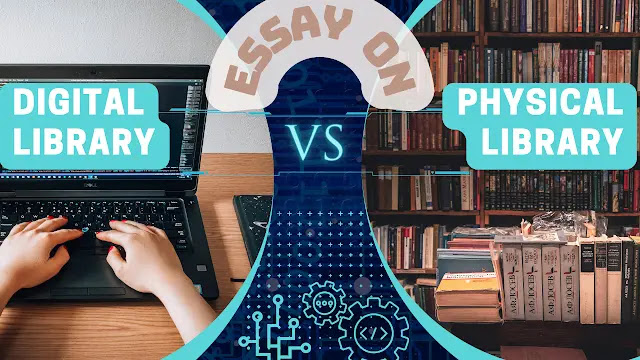ESSAY ON "PHYSICAL LIBRARY VS DIGITAL LIBRARY"
Pages or Pixels? Exploring the Pros and Cons of Physical Libraries and Digital Libraries 📚💻

The arrival of digital technology has brought about significant changes in the way we access and consume information, leading to the rise of digital libraries as alternatives to traditional physical libraries. While both types of libraries serve the purpose of knowledge distribution, they differ in several aspects.
A physical library, also known as a brick-and-mortar library, consists of a physical space filled with shelves of books, periodicals, and other printed materials. It offers a peaceful environment for studying, research, and exploration. Physical libraries provide a sense of community, with librarians offering assistance and organizing events that promote learning and engagement.
On the other hand, a digital library is a virtual platform that provides access to a vast collection of digital resources, including e-books, journals, databases, and multimedia content. Digital libraries can be accessed remotely from any location with an internet connection. They offer the convenience of instant access, searchability, and portability, allowing users to carry an entire library in their pockets.
While physical libraries are precious for their tangible experience, environment, and human interaction, digital libraries offer advantages like 24/7 availability, global accessibility, and cost-effectiveness. They also overcome limitations of space and storage capacity faced by physical libraries.
In conclusion, both physical and digital libraries have their own merits. Physical libraries foster a sense of community and provide a calm environment, while digital libraries offer convenience, accessibility, and a vast range of digital resources. As technology continues to advance, the coexistence of both types of libraries ensures that individuals can access knowledge through their preferred medium, making learning and research more accessible to all.






No comments:
Post a Comment